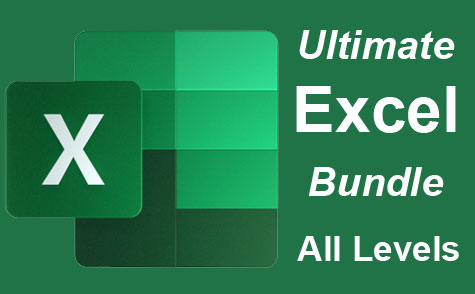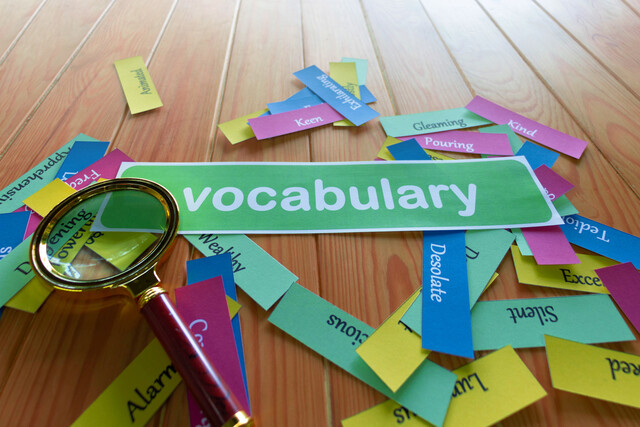Online Class: Understanding Learning Styles

no certificate
with CEU Certificate*
-
15Lessons
-
37Exams &
Assignments -
2,316Students
have taken this course -
3Hours
average time -
0.3CEUs
Course Description
Unlocking the Power of Learning Styles: Your Comprehensive Guide
Welcome to a transformative journey into the world of learning styles. Whether you're an educator, a business professional, a parent, or simply an individual with an insatiable thirst for knowledge, this course promises insights that will change the way you view learning forever.
Why is this course essential?
We live in a diverse world, where every individual has a unique way of processing information. Recognizing and understanding these variances can be the key to unlocking potential, both in academic settings and in everyday life. By delving deep into the nuances of learning styles, this course offers a blueprint for educators, trainers, and leaders to tailor their methods to match individual needs, thereby maximizing outcomes.
Here's what awaits you inside:
-
Historical Foundations: Embark on a historical exploration of learning style theory, tracing its evolution and understanding its foundational concepts.
-
Multiple Intelligences Unveiled: Dive deep into Howard Gardner's groundbreaking Theory of Multiple Intelligences. Learn how these distinct forms of intelligence intertwine with individual learning styles and influence how each person absorbs and processes information.
-
Assessment Techniques: Gain proficiency in assessing various learning styles, empowering you to customize instruction and engagement strategies.
-
Navigating Learning Challenges: Equip yourself with the knowledge to identify and address learning difficulties, ensuring every learner gets the best chance at success.
-
A Peek into Contemporary Research: Stay updated with the latest findings in the domain of learning styles. Understand how current research is shaping pedagogical techniques and offering newer perspectives.
-
Styles Explored: Delve into the characteristics and needs of intuitive learners, visual learners, verbal learners, active learners, reflective learners, sequential learners, and global learners. Recognizing these styles can be the first step in fostering an environment conducive to each learner's growth.
-
Iconic Models of Learning Styles: Explore influential models that have shaped the understanding of learning preferences, including Anthony Gregorc's Model, the Dunn and Dunn Learning Styles Model, and Neil Fleming's VARK Learning Style Model.
-
Constructivism & Its Implications: Engage with the fundamental theories of learning, such as constructivism, and comprehend their relevance in contemporary education and training.
-
Interactive Learning: Through quizzes and assessments, test your grasp of the content, ensuring a robust and comprehensive understanding of the material.
Whether you're designing a corporate training module, crafting a lesson plan, or simply looking to better understand yourself or those around you, this course will arm you with invaluable insights. By the end of your journey with us, you'll not only be familiar with the diverse learning styles but also possess the skills to cater to them, thereby fostering environments of enhanced understanding and growth. Dive in, and let's unravel the wonders of the human mind together!
- Completely Online
- Self-Paced
- Printable Lessons
- Full HD Video

- 6 Months to Complete
- 24/7 Availability
- Start Anytime
- PC & Mac Compatible
- Android & iOS Friendly
- Accredited CEUs

Course Lessons
Lesson 1. Unleashing Potential: Navigating the Spectrum of Learning Styles
 Lesson 1 Video
Lesson 1 Video Review Practice Worksheet: Lesson-1-HomeWork-20501.pdf
Review Practice Worksheet: Lesson-1-HomeWork-20501.pdf Lesson discussions: Reasons for Taking this Course
Lesson discussions: Reasons for Taking this Course Complete Assignment: Motives for Taking this Course
Complete Assignment: Motives for Taking this Course Assessment: Exam 1
Assessment: Exam 1
Lesson 2. Exploring the Landscape of Learning Theories: A Journey Through Time and Minds
 Lesson 2 Video
Lesson 2 Video Review Practice Worksheet: Lesson-2-HomeWork-20502.pdf
Review Practice Worksheet: Lesson-2-HomeWork-20502.pdf Assessment: Exam 2
Assessment: Exam 2 Assessment: Lesson 2 Review Exam
Assessment: Lesson 2 Review Exam
Lesson 3. Constructivism Unveiled
 Lesson 3 Video
Lesson 3 Video Review Practice Worksheet: Lesson-3-Activity-20503.pdf
Review Practice Worksheet: Lesson-3-Activity-20503.pdf Complete: Lesson 3 Activity
Complete: Lesson 3 Activity Assessment: Exam 3
Assessment: Exam 3 Assessment: Lesson 3 Review Exam
Assessment: Lesson 3 Review Exam
Lesson 4. Fostering Diverse Human Potential through Gardner's Theory
 Lesson 4 Video
Lesson 4 Video Review Practice Worksheet: Lesson-4-Activity-20504.pdf
Review Practice Worksheet: Lesson-4-Activity-20504.pdf Assessment: Exam 4
Assessment: Exam 4 Assessment: Lesson 4 Review Exam
Assessment: Lesson 4 Review Exam
Lesson 5. Understanding Learner Diversity for Educational Empowerment
 Lesson 5 Video
Lesson 5 Video Review Practice Worksheet: Lesson-5-Activity-20505.pdf
Review Practice Worksheet: Lesson-5-Activity-20505.pdf Assessment: Exam 5
Assessment: Exam 5 Assessment: Lesson 5 Review Exam
Assessment: Lesson 5 Review Exam
Lesson 6. Exploring the Rich Landscape of Learning Styles
 Lesson 6 Video
Lesson 6 Video Review Practice Worksheet: Lesson-6-StudyGuide-20506.pdf
Review Practice Worksheet: Lesson-6-StudyGuide-20506.pdf Assessment: Exam 6
Assessment: Exam 6 Assessment: Lesson 6 Review Exam
Assessment: Lesson 6 Review Exam
Lesson 7. Diving Deep into Learning Disabilities: Causes, Types, and Solutions
 Lesson 7 Video
Lesson 7 Video Review Practice Worksheet: Lesson-7-Downloadable-20507.pdf
Review Practice Worksheet: Lesson-7-Downloadable-20507.pdf Complete: Lesson 7 Activity
Complete: Lesson 7 Activity Assessment: Exam 7
Assessment: Exam 7 Assessment: Lesson 7 Review Exam
Assessment: Lesson 7 Review Exam
Lesson 8. Exploring the Dynamic Spectrum of Learning Styles: Active vs Reflective
 Lesson 8 Video
Lesson 8 Video Review Practice Worksheet: Lesson-8-WorkSheet-20508.pdf
Review Practice Worksheet: Lesson-8-WorkSheet-20508.pdf Complete: Lesson 8 Activity
Complete: Lesson 8 Activity Assessment: Exam 8
Assessment: Exam 8 Assessment: Lesson 8 Review Exam
Assessment: Lesson 8 Review Exam
Lesson 9. Supporting Global Learners: Strategies for Success
 Lesson 9 Video
Lesson 9 Video Review Practice Worksheet: Lesson-9-StudyGuide-20509.pdf
Review Practice Worksheet: Lesson-9-StudyGuide-20509.pdf Complete: Lesson 9 Activity
Complete: Lesson 9 Activity Assessment: Exam 9
Assessment: Exam 9 Assessment: Lesson 9 Review Exam
Assessment: Lesson 9 Review Exam
Lesson 10. Exploring the Spectrum of Sensory and Intuitive Learning
 Lesson 10 Video
Lesson 10 Video Review Practice Worksheet: Lesson-10-StudyGuide-20512.pdf
Review Practice Worksheet: Lesson-10-StudyGuide-20512.pdf Assessment: Exam 10
Assessment: Exam 10 Assessment: Lesson 10 Review Exam
Assessment: Lesson 10 Review Exam
Lesson 11. The Craft of Sequential Learning: A Systematic Approach
 Lesson 11 Video
Lesson 11 Video Review Practice Worksheet: Lesson-11-Downloadable-20513.pdf
Review Practice Worksheet: Lesson-11-Downloadable-20513.pdf Assessment: Exam 11
Assessment: Exam 11 Assessment: Lesson 11 Review Exam
Assessment: Lesson 11 Review Exam
Lesson 12. Visual vs. Verbal: The Path to Personalized Learning
 Lesson 12 Video
Lesson 12 Video Review Practice Worksheet: Lesson-12-WorkSheet-20515.pdf
Review Practice Worksheet: Lesson-12-WorkSheet-20515.pdf Assessment: Exam 12
Assessment: Exam 12 Assessment: Lesson 12 Review Exam
Assessment: Lesson 12 Review Exam
Lesson 13. Harnessing Technology to Revolutionize Education: Unraveling the Impact of Digital Learning Tools in Modern Classrooms
 Lesson 13 Video
Lesson 13 Video Review Practice Worksheet: Lesson-13-HomeWork-20518.pdf
Review Practice Worksheet: Lesson-13-HomeWork-20518.pdf Assessment: Exam 13
Assessment: Exam 13 Assessment: Lesson 13 Review Exam
Assessment: Lesson 13 Review Exam
Lesson 14. Personalized Learning: Adapting Education to Unique Styles
 Lesson 14 Video
Lesson 14 Video Review Practice Worksheet: Lesson-14-WorkSheet-20520.pdf
Review Practice Worksheet: Lesson-14-WorkSheet-20520.pdf Complete: Lesson 14 Activity
Complete: Lesson 14 Activity Assessment: Exam 14
Assessment: Exam 14 Assessment: Lesson 14 Review Exam
Assessment: Lesson 14 Review Exam
Lesson 15. Exploring the Depths of Learning Styles: A New Understanding
 Lesson 15 Video
Lesson 15 Video Review Practice Worksheet: Lesson-15-StudyGuide-20522.pdf
Review Practice Worksheet: Lesson-15-StudyGuide-20522.pdf Lesson discussions: End of Course Poll; Course Comments; Course Comments
Lesson discussions: End of Course Poll; Course Comments; Course Comments Complete: Lesson 15 Activity
Complete: Lesson 15 Activity Assessment: Exam 15
Assessment: Exam 15 Assessment: The Final Exam
Assessment: The Final Exam Assessment: Lesson 15 Review Exam
Assessment: Lesson 15 Review Exam
Learning Outcomes
- Demonstrate the application of multiple learning styles by using practical assessment tools to identify individual preferences and tailor instructional approaches for improved engagement and retention.
- Describe the characteristics of visual, auditory, and tactile learners, and explain how these traits can influence personalized education strategies across various environments.
- Analyze and differentiate between various learning theories by evaluating their practical applications and discussing how they can be integrated into educational and professional settings to optimize individual learning experiences.
- Recognize and explain the concepts of major learning style theories by describing the key elements of Gregorc's Cognitive Styles Model, Dunn and Dunn Learning Styles Model, Howard Gardner's Multiple Intelligences Theory, and Neil Fleming's VARK Model.
- Critically analyze and apply modern constructivist practices in education, such as inquiry-based learning and personalized learning, demonstrating their impact on diverse learning environments.
- Define and explain the core principles of constructivism, including the roles of active learning and cognitive development, with examples from historical figures.
- Analyze the influence of multiple intelligences on educational practices and how they accommodate diverse learning needs.
- Define the concept of multiple intelligences and identify at least three distinct types described in Gardner's theory.
- Analyze the impact of modern digital tools on accommodating diverse learning preferences and evaluate their effectiveness compared to traditional teaching methods.
- Identify and describe at least three primary learning styles and give examples of strategies to accommodate each style in a learning environment.
- Define and categorize your personal learning style using the VARK, Learning Style Inventory, or Index of Learning Styles Assessment.
- Design personalized learning strategies tailored to your identified learning style to enhance academic and personal growth.
- Define the characteristics of different learning disabilities, including dyslexia, dysgraphia, and dyscalculia, and identify their impact on cognitive processing.
- Demonstrate mastery of lesson content at levels of 70% or higher.
Additional Course Information

- Document Your Lifelong Learning Achievements
- Earn an Official Certificate Documenting Course Hours and CEUs
- Verify Your Certificate with a Unique Serial Number Online
- View and Share Your Certificate Online or Download/Print as PDF
- Display Your Certificate on Your Resume and Promote Your Achievements Using Social Media

Choose Your Subscription Plan
No Certificate / No CEUs
This course only
| Includes certificate | X |
| Includes CEUs | X |
| Self-paced |

|
| Instructor support |

|
| Time to complete | 6 months |
| No. of courses | 1 course |
Certificate & CEUs
This course only
| Includes certificate |

|
| Includes CEUs |

|
| Self-paced |

|
| Instructor support |

|
| Time to complete | 6 months |
| No. of courses | 1 course |
Certificates & CEUs
Includes all 600+ courses
| Includes certificate |

|
| Includes CEUs |

|
| Self-paced |

|
| Instructor support |

|
| Time to complete | 12 Months |
| No. of courses | 600+ |
Certificates & CEUs
Includes all 600+ courses
| Includes certificate |

|
| Includes CEUs |

|
| Self-paced |

|
| Instructor support |

|
| Time to complete | 24 Months |
| No. of courses | 600+ |
Student Testimonials
- "The class really opened my eyes to the various learning styles and multiple intelligences. The format of the presentation was great." -- Diana M.
- "This course had a lot of interesting information that I enjoyed learning about. It has a lot of applications for use in the classroom. Thank you!" -- Penn C.
- "I think it has been a great class, with a lot of information that I will be able to use in the classroom." -- Heather N.
- "Yes, I think this course was very helpful. It provided me with more insight into how people learn. It will come in handy with students and fellow colleagues." -- Rebecca D.
- "I learned a lot and really enjoyed the course. It has helped me to evaluate my own learning style and that of my own children. I will use this information in my classroom also to help my students think about and understand their learning style." -- Kimberly S.
- "I really enjoyed the class. It was great to gain better insight to some learning styles while also learning about some new ones. Typically we always reference to the visual, tactile and auditory learners, but there are so many more out there." -- Alissa M.
- "This course was very informative and provides excellent information to help students learn based on their learning styles." -- Alyce P.
- "This class was very informative and helpful." -- Chris M.
- "Very helpful and informative!" -- Jorge E.
- "Great course, very well organized. It's clear from the content that the instructor is an expert in his field." -- Daniel W.
Related Courses
-
 72 hours
7.2 CEUs
Writing Help Course Bundle
+ More Info
72 hours
7.2 CEUs
Writing Help Course Bundle
+ More Info
-
 17 hours
1.7 CEUs
ESL Basic Grammar and Writing
+ More Info
17 hours
1.7 CEUs
ESL Basic Grammar and Writing
+ More Info
-
 52 hours
5.2 CEUs
ESL Grammar Skills: Level 1-5 Course Bundle
+ More Info
52 hours
5.2 CEUs
ESL Grammar Skills: Level 1-5 Course Bundle
+ More Info
-
 26 hours
2.6 CEUs
Human Resources Productivity Course Bundle
+ More Info
26 hours
2.6 CEUs
Human Resources Productivity Course Bundle
+ More Info
-
 21 hours
2.1 CEUs
Ultimate Parenting Course Bundle
+ More Info
21 hours
2.1 CEUs
Ultimate Parenting Course Bundle
+ More Info
-
 10 hours
1.0 CEUs
Memory and Concentration Techniques
+ More Info
10 hours
1.0 CEUs
Memory and Concentration Techniques
+ More Info
-
 95 hours
9.5 CEUs
Math All-In-One (Arithmetic, Algebra, and Geometry Review)
+ More Info
95 hours
9.5 CEUs
Math All-In-One (Arithmetic, Algebra, and Geometry Review)
+ More Info
-
 21 hours
2.1 CEUs
American Wars: American Revolution and Civil War
+ More Info
21 hours
2.1 CEUs
American Wars: American Revolution and Civil War
+ More Info
-
 27 hours
2.7 CEUs
World War l and ll
+ More Info
27 hours
2.7 CEUs
World War l and ll
+ More Info
-
 26 hours
2.6 CEUs
Ultimate Excel Training Bundle
+ More Info
26 hours
2.6 CEUs
Ultimate Excel Training Bundle
+ More Info
-
 45 hours
4.5 CEUs
Event Management Course Bundle
+ More Info
45 hours
4.5 CEUs
Event Management Course Bundle
+ More Info
-
 74 hours
7.4 CEUs
Medical Billing and Coding Course Bundle
+ More Info
74 hours
7.4 CEUs
Medical Billing and Coding Course Bundle
+ More Info
-
 54 hours
5.4 CEUs
Become a Life Coach - Course Bundle
+ More Info
54 hours
5.4 CEUs
Become a Life Coach - Course Bundle
+ More Info
-
 36 hours
3.6 CEUs
Ultimate Secretary Training Bundle
+ More Info
36 hours
3.6 CEUs
Ultimate Secretary Training Bundle
+ More Info
-
 6 hours
0.6 CEUs
Essay Crafting 101: Turning Ideas into Masterpieces
+ More Info
6 hours
0.6 CEUs
Essay Crafting 101: Turning Ideas into Masterpieces
+ More Info
-
 5 hours
0.5 CEUs
Home Safety
+ More Info
5 hours
0.5 CEUs
Home Safety
+ More Info
-
 7 hours
0.7 CEUs
Computer Literacy Level 1 - Computer Basics
+ More Info
7 hours
0.7 CEUs
Computer Literacy Level 1 - Computer Basics
+ More Info
-
 6 hours
0.6 CEUs
Dealing with Difficult People
+ More Info
6 hours
0.6 CEUs
Dealing with Difficult People
+ More Info
-
 5 hours
0.5 CEUs
Vocabulary Level 2
+ More Info
5 hours
0.5 CEUs
Vocabulary Level 2
+ More Info
-
 33 hours
3.3 CEUs
Comprehensive Medical Terminology 1 & 2
+ More Info
33 hours
3.3 CEUs
Comprehensive Medical Terminology 1 & 2
+ More Info
-
 6 hours
0.6 CEUs
Introduction to Abnormal Psychology
+ More Info
6 hours
0.6 CEUs
Introduction to Abnormal Psychology
+ More Info
-
 13 hours
1.3 CEUs
Image Consultant
+ More Info
13 hours
1.3 CEUs
Image Consultant
+ More Info
-
 8 hours
0.8 CEUs
American Revolutionary War
+ More Info
8 hours
0.8 CEUs
American Revolutionary War
+ More Info
-
 35 hours
3.5 CEUs
Statistics 101
+ More Info
35 hours
3.5 CEUs
Statistics 101
+ More Info
-
 17 hours
1.7 CEUs
Introduction to SQL
+ More Info
17 hours
1.7 CEUs
Introduction to SQL
+ More Info
-
 12 hours
1.2 CEUs
Adobe Photoshop
+ More Info
12 hours
1.2 CEUs
Adobe Photoshop
+ More Info






